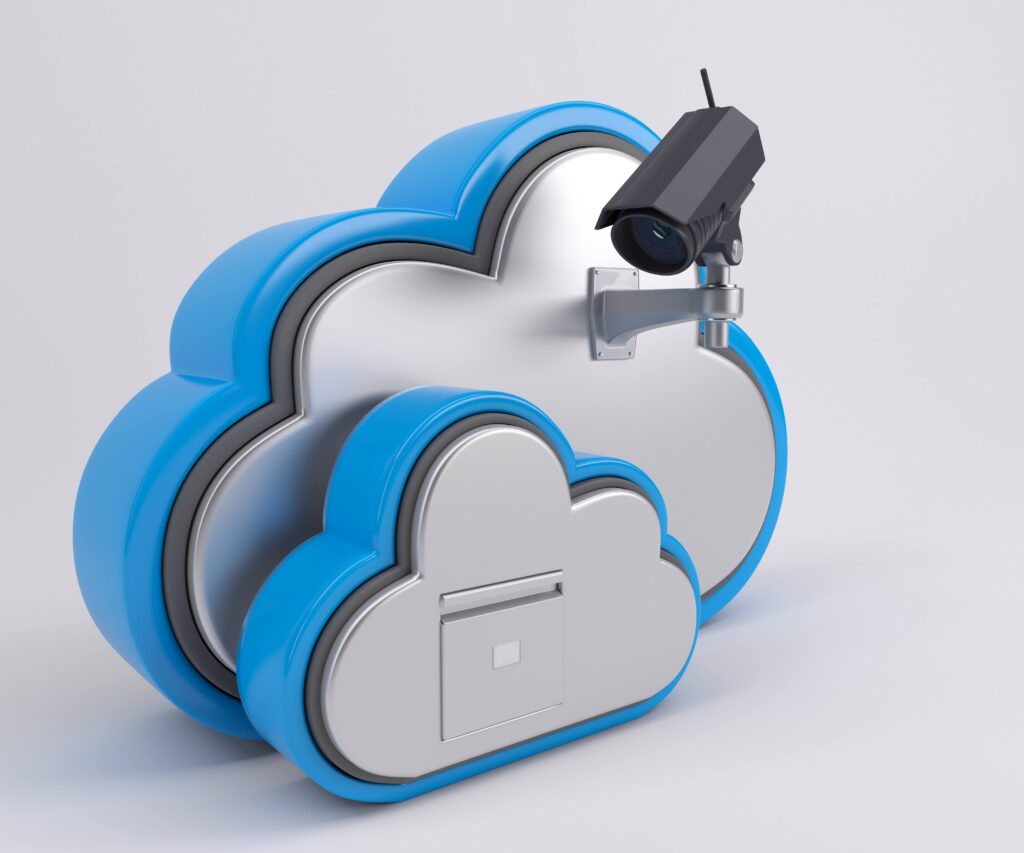The shift to cloud-native environments has transformed how organizations build, deploy, and manage applications. As businesses increasingly adopt cloud-native technologies like containers, microservices, and serverless architectures, cybersecurity strategies must evolve to address new challenges. This article explores how cybersecurity adapts to cloud-native environments, focusing on the unique risks, innovative solutions, and best practices for securing these dynamic ecosystems.
Cloud-Native Environments
What Are Cloud-Native Environments?
Cloud-native environments refer to the use of cloud computing technologies to develop and run scalable applications in modern, dynamic infrastructures. These environments typically leverage containers, microservices, and orchestration tools like Kubernetes to enable rapid development, deployment, and scaling of applications.

Key Characteristics of Cloud-Native Environments
- Microservices Architecture: Applications are broken down into smaller, independent services that can be developed, deployed, and scaled independently.
- Containerization: Applications and their dependencies are packaged into containers, ensuring consistency across different environments.
- Dynamic Orchestration: Tools like Kubernetes automate the deployment, scaling, and management of containerized applications.
- DevOps Integration: Continuous integration and continuous deployment (CI/CD) pipelines enable rapid and frequent updates.
The Cybersecurity Challenges in Cloud-Native Environments
Increased Attack Surface
Cloud-native environments introduce a broader attack surface due to the distributed nature of microservices and the dynamic scaling of resources. Each microservice and container can potentially be a target for attackers, making it challenging to secure every component.
Complexity of Container Security
Containers, while efficient, introduce unique security challenges. Vulnerabilities in container images, misconfigurations, and runtime threats can compromise the entire environment. Additionally, the ephemeral nature of containers makes it difficult to monitor and secure them effectively.
API Vulnerabilities
Microservices rely heavily on APIs for communication, making them a prime target for attacks. Insecure APIs can lead to data breaches, unauthorized access, and other security incidents.
Compliance and Data Privacy
Cloud-native environments often span multiple cloud providers and regions, complicating compliance with data privacy regulations like GDPR and CCPA. Ensuring consistent security policies and data protection across these environments is a significant challenge.
How Cybersecurity is Adapting to Cloud-Native Environments
Zero Trust Architecture
Zero Trust Architecture (ZTA) is becoming a cornerstone of cloud-native security. Unlike traditional perimeter-based security models, ZTA assumes that no user or device is trusted by default, even if they are inside the network. This approach requires continuous verification of identity and strict access controls, reducing the risk of unauthorized access.
Key Components of Zero Trust Architecture
- Identity and Access Management (IAM): Ensures that only authorized users and devices can access resources.
- Multi-Factor Authentication (MFA): Adds an extra layer of security by requiring multiple forms of verification.
- Least Privilege Access: Limits user permissions to the minimum necessary for their role.
Container Security Best Practices
Securing containers requires a multi-layered approach that addresses vulnerabilities at every stage of the container lifecycle.
Image Security
- Use Trusted Base Images: Start with secure, verified base images from reputable sources.
- Scan for Vulnerabilities: Regularly scan container images for known vulnerabilities and misconfigurations.
- Minimize Image Size: Reduce the attack surface by including only necessary components in the container image.
Runtime Security
- Monitor Container Activity: Continuously monitor containers for suspicious behavior and anomalies.
- Implement Network Policies: Use network segmentation and firewalls to restrict container communication.
- Enforce Security Policies: Apply security policies consistently across all containers and environments.
API Security
Securing APIs is critical in cloud-native environments, where microservices rely on them for communication.
Authentication and Authorization
- Use OAuth and OpenID Connect: Implement robust authentication and authorization mechanisms to control access to APIs.
- Rate Limiting and Throttling: Prevent abuse by limiting the number of requests an API can handle.
Encryption
- Use HTTPS: Encrypt API communications using HTTPS to protect data in transit.
- Data Encryption: Encrypt sensitive data stored or processed by APIs.
Compliance and Data Privacy
Ensuring compliance in cloud-native environments requires a proactive approach to data protection and privacy.
Data Classification
- Identify Sensitive Data: Classify data based on its sensitivity and apply appropriate security controls.
- Data Masking: Mask sensitive data to protect it from unauthorized access.
Audit and Monitoring
- Continuous Monitoring: Implement continuous monitoring to detect and respond to security incidents in real-time.
- Audit Logs: Maintain detailed audit logs to track access and changes to data.
Best Practices for Securing Cloud-Native Environments
Implement DevSecOps
DevSecOps integrates security into the DevOps pipeline, ensuring that security is considered at every stage of the development process.
Key Practices
- Automated Security Testing: Use automated tools to test for vulnerabilities during the CI/CD process.
- Security as Code: Define security policies and configurations as code to ensure consistency and repeatability.
- Collaboration: Foster collaboration between development, security, and operations teams to address security issues proactively.
Use Cloud-Native Security Tools
Several tools are specifically designed to address the unique security challenges of cloud-native environments.
Kubernetes Security Tools
- Kube-bench: Checks Kubernetes clusters against security best practices.
- Falco: Provides runtime security monitoring for containers and Kubernetes.
Container Security Tools
- Clair: Scans container images for vulnerabilities.
- Anchore: Analyzes container images for security and compliance issues.
Regularly Update and Patch
Keeping software and systems up to date is crucial for maintaining security in cloud-native environments.
Patch Management
- Automate Patching: Use automated tools to apply patches and updates promptly.
- Monitor for Vulnerabilities: Stay informed about new vulnerabilities and apply patches as soon as they are available.
Educate and Train Teams
Human error is a significant factor in security breaches. Educating and training teams on security best practices can reduce the risk of incidents.
Security Awareness Training
- Regular Training: Conduct regular training sessions to keep teams updated on the latest security threats and best practices.
- Phishing Simulations: Use phishing simulations to test and improve employees’ ability to recognize and respond to phishing attacks.
FAQ
What is a cloud-native environment?
A cloud-native environment is a modern approach to building and running applications that leverages cloud computing technologies like containers, microservices, and orchestration tools to enable rapid development, deployment, and scaling.
Why is cybersecurity challenging in cloud-native environments?
Cybersecurity is challenging in cloud-native environments due to the increased attack surface, complexity of container security, API vulnerabilities, and the need to ensure compliance and data privacy across dynamic and distributed systems.
What is Zero Trust Architecture?
Zero Trust Architecture (ZTA) is a security model that assumes no user or device is trusted by default, even if they are inside the network. It requires continuous verification of identity and strict access controls to reduce the risk of unauthorized access.
How can I secure containers in a cloud-native environment?
Securing containers involves using trusted base images, regularly scanning for vulnerabilities, minimizing image size, monitoring container activity, implementing network policies, and enforcing security policies consistently.
What are some best practices for API security in cloud-native environments?
Best practices for API security include using robust authentication and authorization mechanisms like OAuth and OpenID Connect, implementing rate limiting and throttling, and encrypting API communications using HTTPS.
How can I ensure compliance in a cloud-native environment?
Ensuring compliance in a cloud-native environment involves identifying and classifying sensitive data, applying appropriate security controls, implementing continuous monitoring, and maintaining detailed audit logs.
What is DevSecOps?
DevSecOps is the integration of security into the DevOps pipeline, ensuring that security is considered at every stage of the development process. It involves automated security testing, defining security policies as code, and fostering collaboration between development, security, and operations teams.
What tools can I use to secure Kubernetes?
Tools like Kube-bench and Falco can help secure Kubernetes by checking clusters against security best practices and providing runtime security monitoring for containers and Kubernetes.
How important is patch management in cloud-native environments?
Patch management is crucial in cloud-native environments to address vulnerabilities and maintain security. Automating patching and staying informed about new vulnerabilities are key practices.
Why is security awareness training important?
Security awareness training is important because human error is a significant factor in security breaches. Regular training and phishing simulations can help reduce the risk of incidents by improving employees’ ability to recognize and respond to security threats.
Conclusion
As organizations continue to embrace cloud-native environments, cybersecurity must adapt to address the unique challenges posed by these dynamic and distributed systems. By implementing Zero Trust Architecture, securing containers and APIs, ensuring compliance, and adopting best practices like DevSecOps and regular patch management, organizations can build robust security postures that protect their cloud-native applications. Educating and training teams on security best practices further reduces the risk of incidents, ensuring a secure and resilient cloud-native environment.

